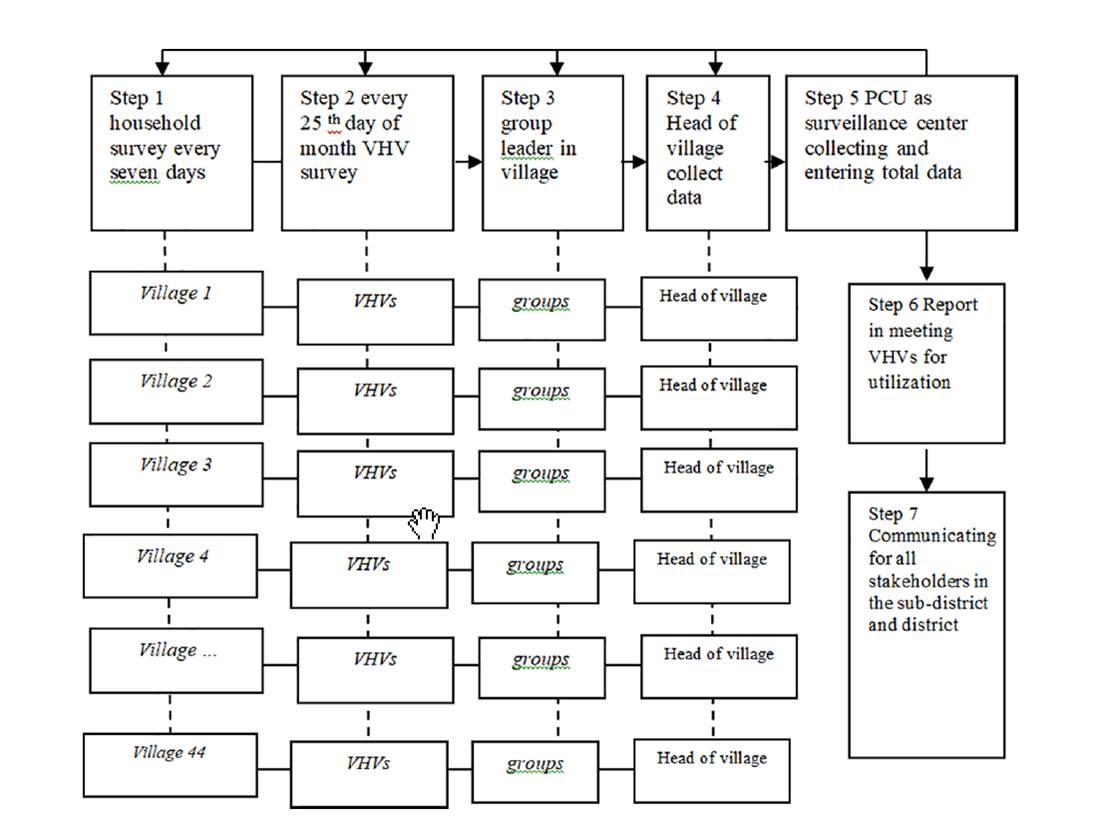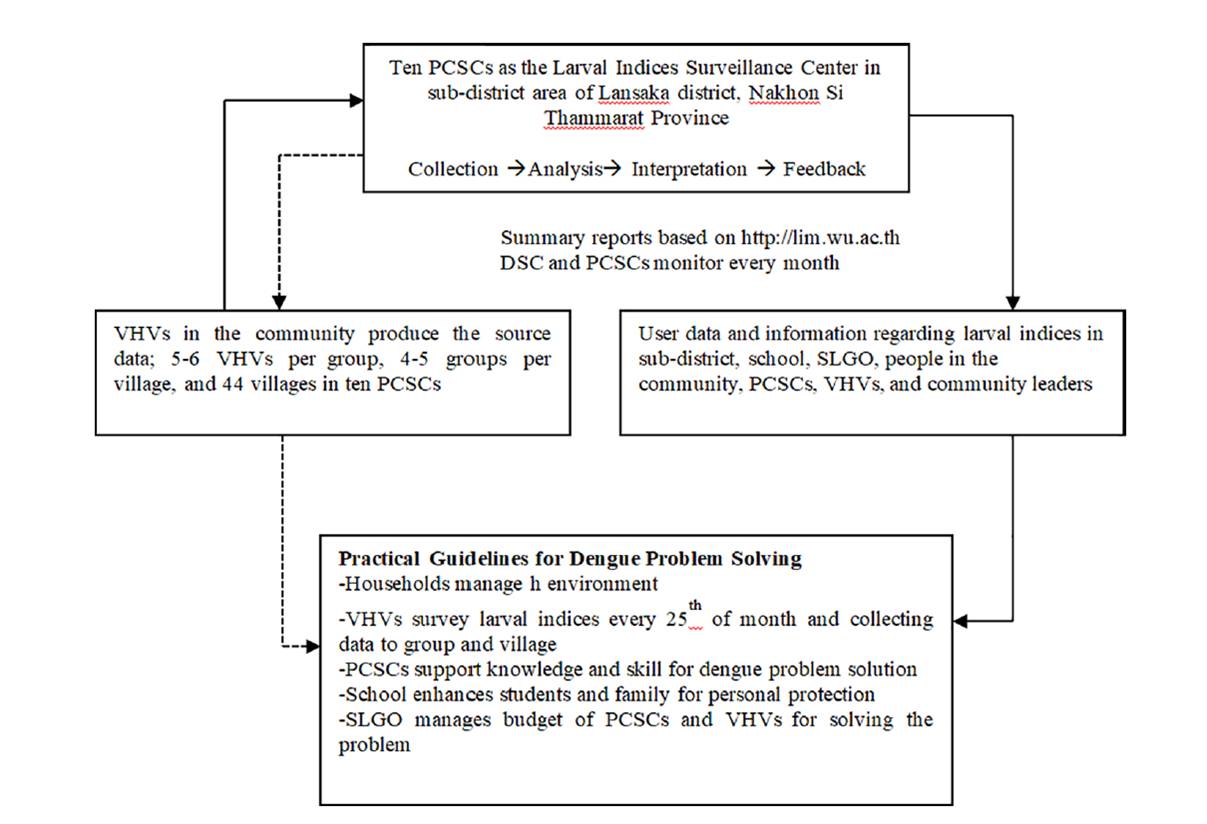Business & Economy
The Lansaka Model ‒ the Larval Indices Surveillance System for a Sustainable Dengue Solution in Southern Thailand
Walailak Innovation 10, January 2019
The “Lansaka Model”‒ the Larval Indices Surveillance System for a Sustainable Dengue Solution in Southern Thailand
The lansaka model is a technological solution for dengue. The model functions through a community participatory action approach that includes five steps: 1) community preparation, 2) situation assessment, 3) development of the surveillance system, 4) implementation, and 5) evaluation of the output, outcome, and impact. Important impacts were decreased dengue morbidity, establishment of a district larval indices surveillance system, and community mobilization. Suggestions for achieving a sustainable dengue solution involve: 1) expanding dengue prevention work to include area-based collaborative research, 2) setting supporting policies and budgets for the district/province, 3) following the guidelines of the larval indices surveillance system, and 4) transmitting technology to other areas.
According to Figure 1, the surveillance system of households in each sub-district consists of seven steps: First, village health volunteers (VHVs) are divided into 3-4 groups per village. Second, a VHV surveys the larval indices in 10-15 households every 25th day using the “violet book” and sends the larval indices data to the group leader. Third, the group leader collects all the data from the VHVs in the “blue book”. Fourth, the VHV leader in each village collects all the data from the group leaders in the “yellow book”. Fifth, the primary care unit (PCU) collects and records the data from all villages using the online program https://limnakhonsi.wu.ac.th, analyzes the data, and reports the results on the 30th day of every month. Sixth, the larval indices levels of the Breteau Index (BI), House Index (HI), and Container index (CI) are reported at the VHV meeting every month. Health workers then calculate the larval indices based on information obtained from VHVs in order to prevent dengue in high-risk village areas. Seventh, information is communicated by the VHVs to all stakeholders in the community: the sub-district government organization (SLGO), elementary schools, and households.

Figure 1 The Seven Steps of the Larval Indices Surveillance System at the Household Level.
(Suwanbamrung et al, 2018 htpps://doi.org/10.1371/jiornal.pone.0201107.g002)
The surveillance system at the district level depends on the overall connection of districts (nine PCSCs). The pattern consists of 4 components: 1) the production of source data groups who are VHVs covering households; 2) district surveillance centers (DSCs) and sub-DSCs who are health officers monitoring the program and system of collecting larval survey data; 3) user data and information on larval indices in the sub-district and district communities, and 4) practical guidelines for dengue problem solving in each sub-district (Figure 2).

Figure 2 The four components of the larval indices at the district level
(Suwanbamrung et al, 2018 htpps://doi.org/10.1371/jiornal.pone.0201107.g002)
Transmission of the “lansaka model” to other areas is the following:
1) “Transmitting the Technology of the “Lansaka Model:” the Model of Larval Indices Surveillance System for Sustainable Dengue Problem Solution from Household to District Level” was conducted in Chaiya district, Suratthani Province.
2) “Transferring the Technology of the Chaiya Model: the Network of Aedes aegypti larval Indices Surveillance System Model for Dengue Solution in Suratthani Province;” project conducted in 18 districts in Suratthani province.
3) “Transmitting Technology to Make Policy for Developing Dengue Prevention Guidelines in the Community and Dengue Clinical Practice Guidelines in the Hospital for Health Leaders in 22 Districts, Nakhon Si Thammarat Province” is active in 22 districts Nakhon Si Thammarat Province.
Investigators:
Assoc.Prof.Dr.Charuai Suwanbamrung,
The Excellent Center for Dengue Research and Academic Service (EC for DRAS)
School of Public Health,
Walailak University, Thasala, Nakhon Si Thammarat 80160
Sources:
- Suwanbamrung, C., C. Thoutong, T. Eksirinimit, S. Tongjan and K. Thongkew, (2018). The Use of “Lansaka Model” as the Larval indices surveillance system for a sustainable solution to the dengue problem in Southern Thailand. PLoSONE,13(8)
- Suwanbamrung, C.(2018). Developing the active larval indices surveillance system for dengue solution in low and high dengue risk primary care unites, Journal of Health Research, 32(6). https://doi.org/10.1108/JHR-11-2018-081
- Suwanbamrung C, S. Thogian, C. Ponprasert , P. Situka, and P. Mopraman. (2018). "Chaiya model" the Model of network for Aedes Aegypti larval indices surveillance system for sustainable dengue solution: The results from transmitting technology to community. Area Based Development Research Journal. 10(1):70-87. (in Thai)
- Suwanbamrung C, Thuethong C, Eksirinimit T and Thongchan S. (2016). The development of larval indices surveillance system for dengue prevention in high risk district, Nakhon Si Thammarat province. Journal of Community Development and Life of Quality 5(1): 58-76. (in Thai)
Facebook: wufrontovation
Related Link:
- College of Graduate Studies, Walailak University
- Facebook of College of Graduate Studies